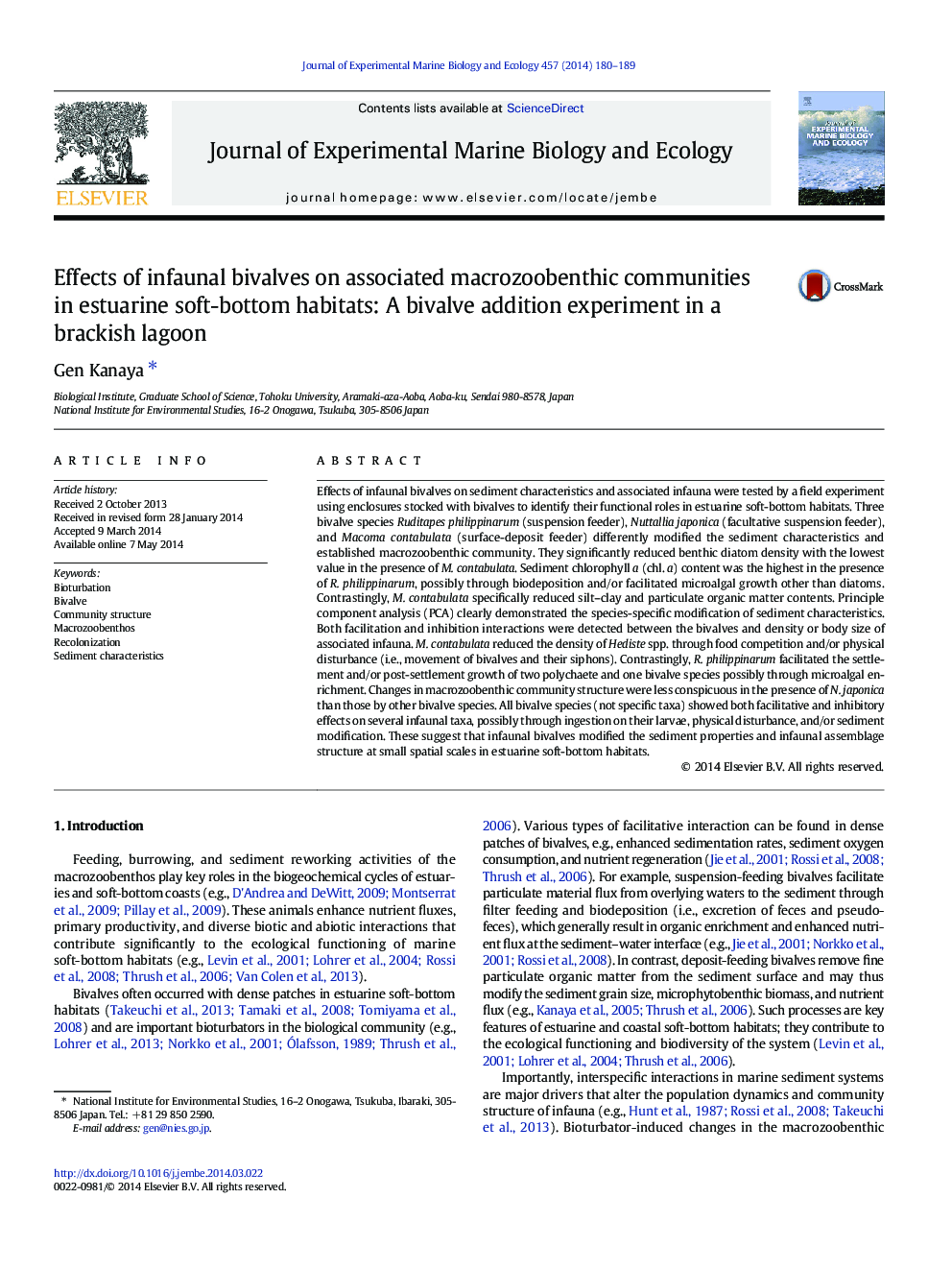| کد مقاله | کد نشریه | سال انتشار | مقاله انگلیسی | نسخه تمام متن |
|---|---|---|---|---|
| 6304217 | 1618418 | 2014 | 10 صفحه PDF | دانلود رایگان |
عنوان انگلیسی مقاله ISI
Effects of infaunal bivalves on associated macrozoobenthic communities in estuarine soft-bottom habitats: A bivalve addition experiment in a brackish lagoon
ترجمه فارسی عنوان
اثرات دو سوسپانون فضولات در جوامع مکرر زیست شناختی مرتبط در زیستگاه های زیرین نرم در زیر دریا: یک آزمایش افزودنی دوغاله در یک تالاب لاوی
دانلود مقاله + سفارش ترجمه
دانلود مقاله ISI انگلیسی
رایگان برای ایرانیان
کلمات کلیدی
موضوعات مرتبط
علوم زیستی و بیوفناوری
علوم کشاورزی و بیولوژیک
علوم آبزیان
چکیده انگلیسی
Effects of infaunal bivalves on sediment characteristics and associated infauna were tested by a field experiment using enclosures stocked with bivalves to identify their functional roles in estuarine soft-bottom habitats. Three bivalve species Ruditapes philippinarum (suspension feeder), Nuttallia japonica (facultative suspension feeder), and Macoma contabulata (surface-deposit feeder) differently modified the sediment characteristics and established macrozoobenthic community. They significantly reduced benthic diatom density with the lowest value in the presence of M. contabulata. Sediment chlorophyll a (chl. a) content was the highest in the presence of R. philippinarum, possibly through biodeposition and/or facilitated microalgal growth other than diatoms. Contrastingly, M. contabulata specifically reduced silt-clay and particulate organic matter contents. Principle component analysis (PCA) clearly demonstrated the species-specific modification of sediment characteristics. Both facilitation and inhibition interactions were detected between the bivalves and density or body size of associated infauna. M. contabulata reduced the density of Hediste spp. through food competition and/or physical disturbance (i.e., movement of bivalves and their siphons). Contrastingly, R. philippinarum facilitated the settlement and/or post-settlement growth of two polychaete and one bivalve species possibly through microalgal enrichment. Changes in macrozoobenthic community structure were less conspicuous in the presence of N. japonica than those by other bivalve species. All bivalve species (not specific taxa) showed both facilitative and inhibitory effects on several infaunal taxa, possibly through ingestion on their larvae, physical disturbance, and/or sediment modification. These suggest that infaunal bivalves modified the sediment properties and infaunal assemblage structure at small spatial scales in estuarine soft-bottom habitats.
ناشر
Database: Elsevier - ScienceDirect (ساینس دایرکت)
Journal: Journal of Experimental Marine Biology and Ecology - Volume 457, August 2014, Pages 180-189
Journal: Journal of Experimental Marine Biology and Ecology - Volume 457, August 2014, Pages 180-189
نویسندگان
Gen Kanaya,
